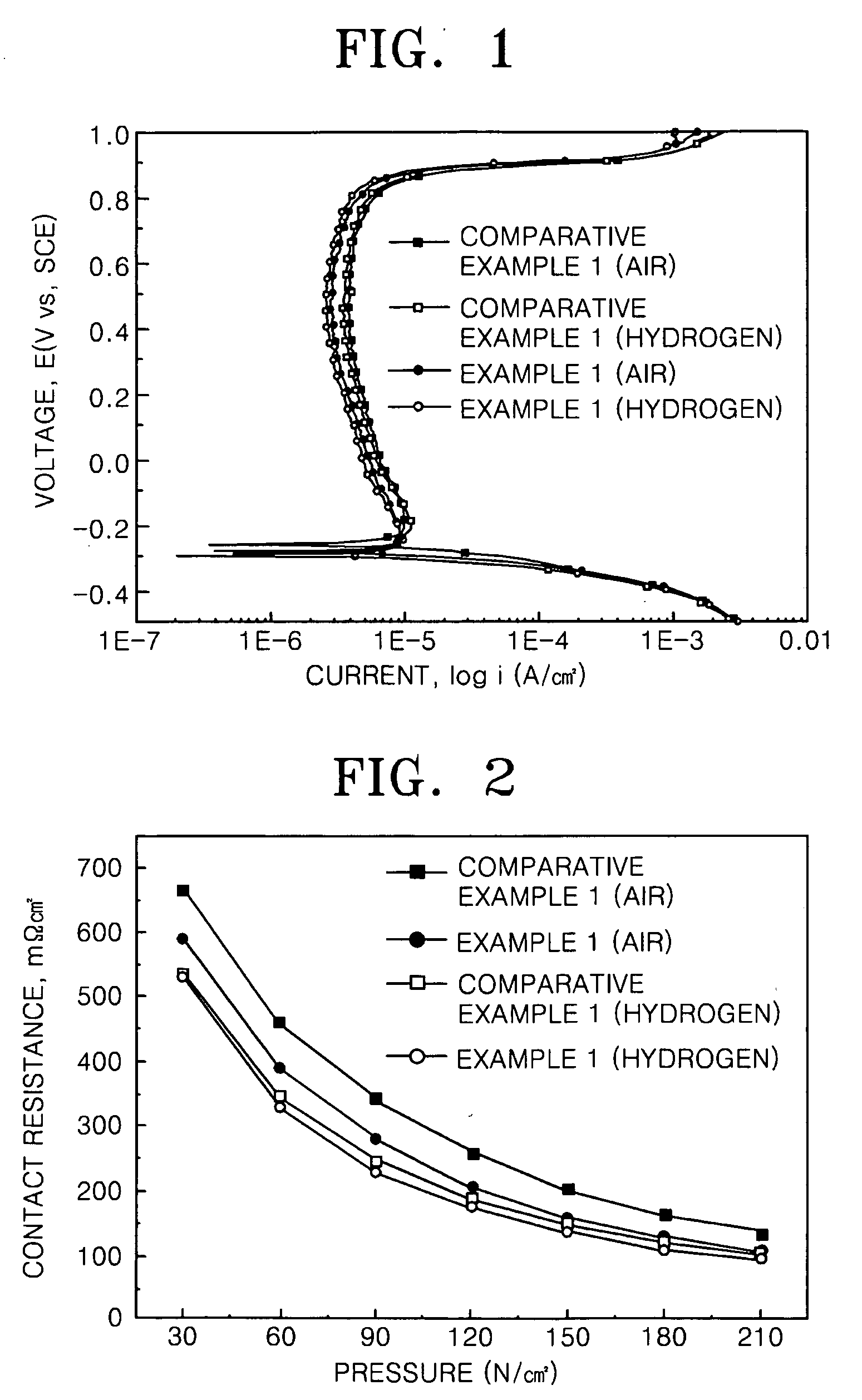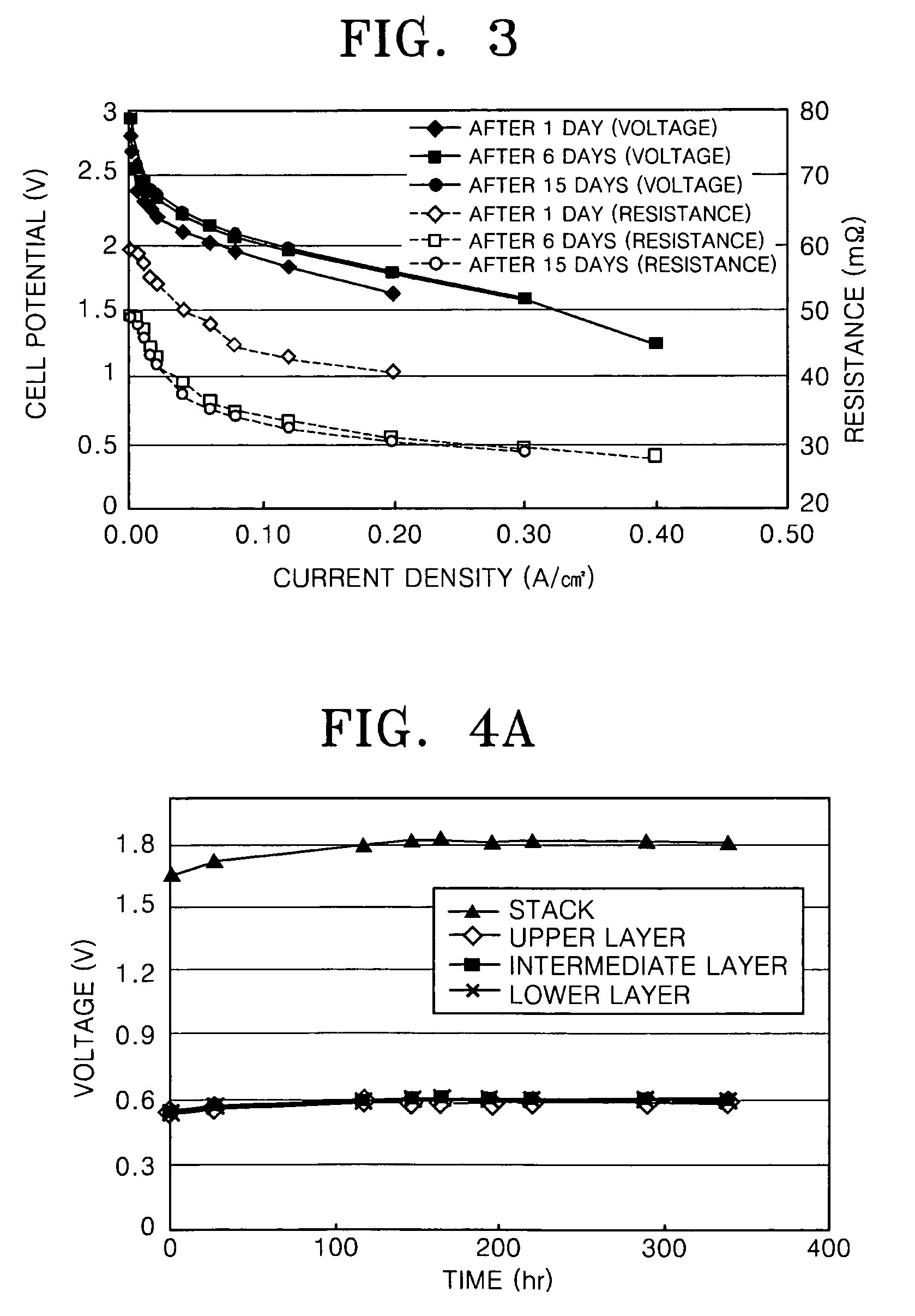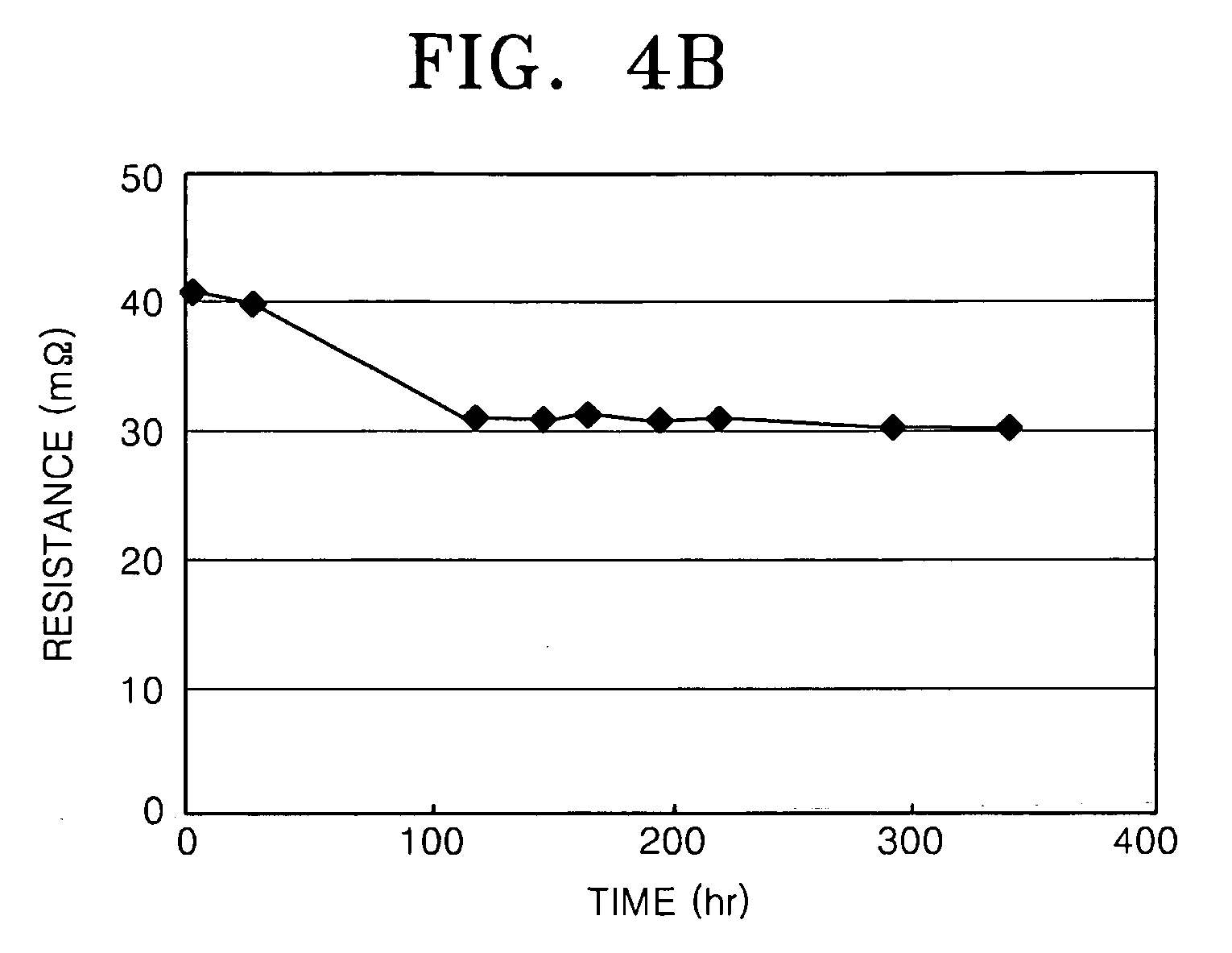Metallic separator for fuel cell
a fuel cell and separator technology, applied in the manufacture of cell components, final product details, cell components, etc., can solve the problems of difficult to reduce the size of a fuel cell stack consisting of several tens to several hundred unit cells, difficult to process bipolar plates with a thickness of less than 2-3 mm, and high cost of graphite plate and milling process. , to achieve the effect of excellent anti-corrosion properties and small contact resistan
- Summary
- Abstract
- Description
- Claims
- Application Information
AI Technical Summary
Benefits of technology
Problems solved by technology
Method used
Image
Examples
example 2
[0068] Bipolar plates and end plates were prepared with the same composition as that of the sample of Example 1, and a fuel cell stack in which 3 MEAs were stacked was prepared. A PBI (polybenzimidazole) membrane impregnated with phosphoric acid and having a thickness of 65 μm was used as an electrolyte membrane, and a Pt / C catalyst impregnated with platinum to a concentration of 1.4 mg / cm2 was used to form an anode and a cathode.
[0069] Air at a temperature of 150° C. was passed through the cathode at a rate of 1000 ml / min and hydrogen at a temperature of 150° C. was passed through the anode at a rate of 300 ml / min to observe the I-V characteristics and contact resistance of the fuel cell stack. The results are shown in FIG. 3.
[0070] Referring to FIG. 3, due to stabilization of the initial operation, the resistance decreased and the cell potential increased between the results after 1 day of operation and the results after 6 days of operation. Also, the results after 15 days of op...
PUM
| Property | Measurement | Unit |
|---|---|---|
| weight ratio | aaaaa | aaaaa |
| pressure | aaaaa | aaaaa |
| current density | aaaaa | aaaaa |
Abstract
Description
Claims
Application Information
 Login to View More
Login to View More - R&D
- Intellectual Property
- Life Sciences
- Materials
- Tech Scout
- Unparalleled Data Quality
- Higher Quality Content
- 60% Fewer Hallucinations
Browse by: Latest US Patents, China's latest patents, Technical Efficacy Thesaurus, Application Domain, Technology Topic, Popular Technical Reports.
© 2025 PatSnap. All rights reserved.Legal|Privacy policy|Modern Slavery Act Transparency Statement|Sitemap|About US| Contact US: help@patsnap.com



